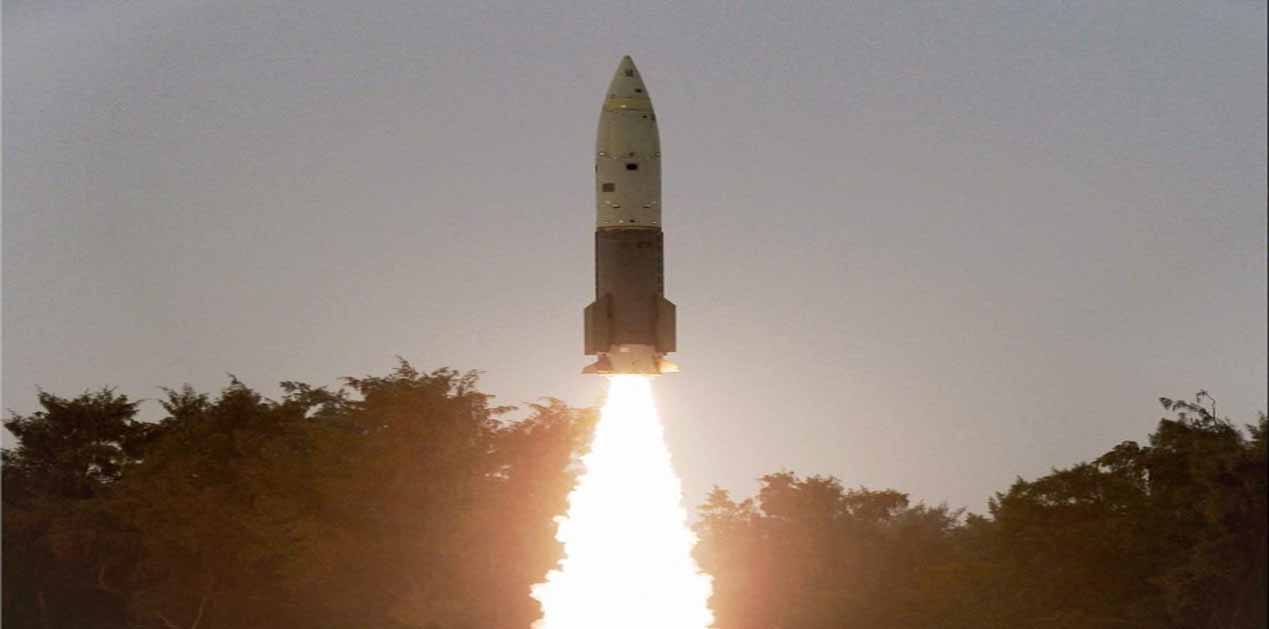On 28 Dec 17, DRDO launched a supersonic interceptor missile (referred to as Advanced Air Defence or AAD Missile) which achieved a direct hit on its intended target at a low altitude of 15 km. The launch not only validated the realisation of the capability of the interceptor but also marked the successful harnessing of certain niche technologies like, the Fibre Optic Gyro (FOG) based on Inertial Navigation System (INS), state-of-the-art guidance and actuation systems and the critical Radio frequency (RF) seeker for the end game. This article attempts put this launch event in the context of the overall system so as to highlight how it marks an important milestone in the nation's march to realising an indigenous Ballistic Missile Defence (BMD) capability.
A Macro View of the System
In order to counter the constantly growing threat of Surface-to-Surface Ballistic Missiles from Pakistan (range 80-3000 km) and China (range 1770-12900+ km), a decision was taken in 2000-2001 to go in for an indigenous BMD system.
This system under the Project named ‘Programme AD (Air Defence)’ was to be developed by the DRDO in two phases. Phase I was to build the BMD shield against an incoming missile threat of ranges up to 2000 km, while Phase 2 extended this capability to cover the missile threat from 2000 to 5000 km. The system was meant to have such interceptors in both the phases that will be effective both in the endo as well as exo-atmospheric region. The timelines for completion of Phase I were 2012 and for Phase 2 by 2016. As the year 2017 is just about to pass into history, the capability envisaged for completion in 2016 is just about getting realised.
The strategy for interception follows a typical air defence engagement sequence. In that, the incoming missile is detected by Long Range Tracking Radar (LRTR) of range of 500-1000 km. Once classified as hostile and prioritized for engagement, the target information, based on its heading parameters and predicted point of impact (PPI) is designed to be passed to a Multi-Functional Radar (MFR). The MFR tracking the incoming threat is to continuously pass the target parameters to the missile via a secure Target Up-link Transmitter (TUT) and Target Uplink Receiver (TUR). At the opportune moment, the interceptor lifts from the launcher and is guided to the target on the TUT-TUR link. Once in the end-game, the target is picked up by the active seeker on board the missile, which closes the missile on to the target.
All the elements are designed to be interconnected through redundant communication links. Since the focus in Phase I and Phase 2 was both endo and exo-atmospheric, interceptors were designed accordingly. For Phase 1, Prithvi Air Defence (PAD) is an interceptor for the exo-atmospheric interception up to altitudes of 50-80 km, while Advanced Air Defence (AAD) is meant for interception in the endo-atmospheric region up to an altitude of 30 km. PAD is a two-stage liquid fuelled interceptor. Its future version is Prithvi Development Vehicle (PDV), in which the liquid fuel propulsion stage is replaced by solid fuel stage.
Phase 2 was to have two interceptors, AD-1 and AD-2. Roughly, the Phase 2 systems was supposed to match the capability of THAAD type of missile deployed by the US. Such a missile can intercept target up to 200 km altitude and track targets at ranges in excess of 1000 km. The entire system consisting of weapon and support systems in Phase 1 and Phase 2 are fully configured and tested and are in the process of operationalisation.
As can be seen , the current launch of AAD relates to the interceptor in the endo-atmospheric range and marks a major milestone in completion of a planned capability. The emerging challenge at this stage is to expedite the operationalisation along the following direction:-
1. Quickly move the entire execution of the system from the core DRDO format to the user format, wherein, the end user (Strategic Forces Command or SFC) is fully confident to deploy, operate, maintain and sustain the system independent of the DRDO scientists.
2. Move from the testing to the serial production phase and link this activity with phased raising and equipping of the tri-service BMD unit under the banner of SFC.
3. Realise alongside an integrated command control and battle management system which will integrate multifarious 'sensors' and 'shooters' of air defence and anti missile system into one seamless loop. This life-line system is to be responsible for optimising surveillance resources through multi-sensor fusion in detection of incoming threat and target designation and weapon selection so as to ensure successive punishment to the incoming threat
4. With the above in place, move forward to complete and operationalise a regime for codes, authorisations and decision formats. At the same time, bring up associated infrastructure for Missile storage, testing and maintenance.
5. Rehearse the user-scientist inter-phase (mating the weapons with special warheads where necessary) through regular practice.
6. Prepare the ground for future integration of the BMD system Fire Units (FUs) with the FUs of S-400 air defence and anti-missile system.
7. Attend to such issues like user training , building up stocks and spare support and related administrative aspects.
It can thus be seen that the launch event on 28 Dec 17 marks an important milestone in an ongoing journey of realising the full-fledged capability of an indigenous BMD system.
(Views expressed are of the author and do not necessarily reflect the views of the VIF)
Image Source: http://images.asianage.com/images/aa-Cover-ta2tpvv11rhrms2e40vmcll6q2-20170213013003.Medi.jpeg










Post new comment